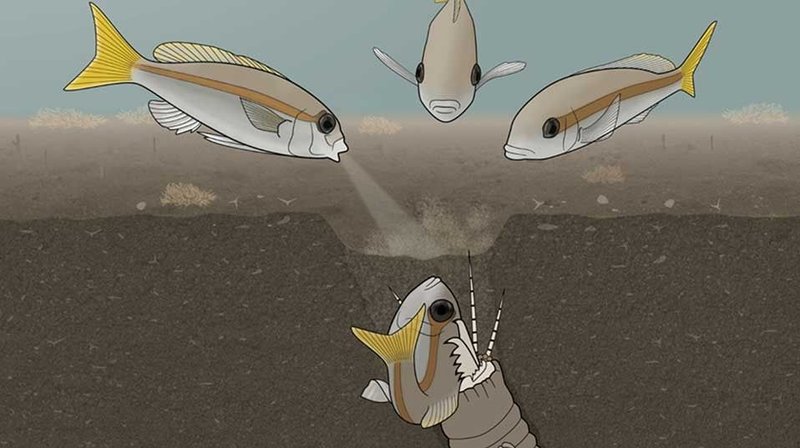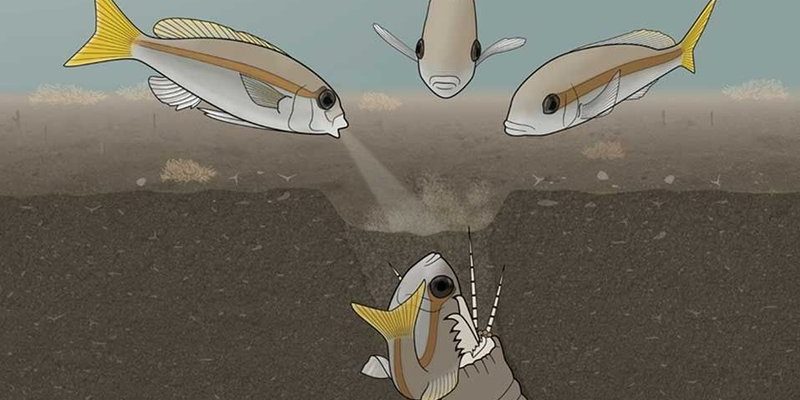
So why should we care about Bobbit worms and their attacks? Well, understanding these creatures gives us a glimpse into the complex and often brutal food web of ocean life. They may not be as popular as dolphins or clownfish, but their role is crucial in maintaining the balance of marine ecosystems. In this blog, we’ll dive deep into the world of Bobbit worms, exploring their biology, behaviors, and the documented encounters with some unsuspecting large fish.
What Is a Bobbit Worm?
The Bobbit worm, or **Eunice aphroditois**, is a marine polychaete worm that’s known for its impressive size and predatory nature. These worms typically inhabit the sandy or muddy seafloor in tropical and subtropical waters. They have a long, segmented body that can reach lengths of 10 feet or more. Imagine a garden hose, but much longer and much more menacing!
One of the worm’s most striking features is its powerful, sharp jaws. When prey, like fish, comes too close, these jaws can snap shut in an instant, capturing their unsuspecting meal. Imagine a magician pulling a rabbit out of a hat—only instead of a rabbit, it’s a large fish, and instead of a hat, it’s a hidden burrow under the sand. This predatory behavior is what makes Bobbit worms both fascinating and frightening.
How Do Bobbit Worms Hunt?
Bobbit worms are ambush predators, meaning they lie in wait for their prey. They typically bury most of their body in the sand, leaving just their head exposed. This tactic is a clever way to blend in with their surroundings, almost like wearing camouflage. When a fish swims by, the Bobbit worm can quickly sense movement and react.
Here’s the thing: Bobbit worms don’t just rely on their quick jaws to capture prey; they also use chemical cues to detect nearby fish. When a fish approaches, the worm can strike with incredible speed and precision. It’s like a game of hide and seek, but the worm always wins.
The documented attacks highlight this skill. Many fish, such as parrotfish and even smaller sharks, have fallen victim to the Bobbit worm’s trap. It’s a harsh reality of marine life, but it underscores the worm’s position as a top predator in its habitat.
Documented Attacks on Large Fish
Fish attacks by Bobbit worms may sound like something out of a science fiction novel, but they’ve been observed by researchers and divers alike. In one incident, a large parrotfish, attracted by the worm’s hidden lure, swam too close and was swiftly grabbed by the worm’s powerful jaws. The fish didn’t stand a chance.
These attacks can be brutal and fast. Some divers have reported seeing the aftermath of an attack—a fish missing a chunk from its side, struggling to swim away. Often, the worm can consume its prey within minutes, devouring it for a hearty meal. It’s not pretty, but it’s nature in action.
These events are not just anecdotal; scientists have documented numerous cases, contributing to our understanding of the Bobbit worm’s predatory behavior. These insights help marine biologists study food webs and predator-prey relationships in ocean ecosystems.
Why Are Bobbit Worms Important to Marine Ecosystems?
You might wonder why we should care about creatures that take down large fish. Bobbit worms play a significant role in controlling fish populations and influencing the overall health of marine habitats. By preying on certain species, they help maintain a balance in the ecosystem, ensuring no single fish species dominates.
Additionally, the presence of predators like Bobbit worms can indicate a healthy environment. A thriving population of these worms often suggests that the ecosystem is robust and supports a diverse range of marine life. So, despite their gruesome dining habits, Bobbit worms can be seen as valuable players in ocean ecology.
Furthermore, understanding their role can inform conservation efforts. As human activities threaten marine habitats, knowing how these organisms interact with their environment helps scientists develop strategies to protect ocean life.
Common Misconceptions About Bobbit Worms
Many people might find Bobbit worms terrifying, and while they have a fearsome reputation, there are a few misconceptions that deserve clarification. For starters, **Bobbit worms are not a threat to humans**. They prefer to stay buried in the sand, and their primary focus is on hunting fish. Unless you’re swimming directly over one and provoke it, they’re not likely to cause you harm.
Another misconception is that Bobbit worms are invincible predators. While they are efficient hunters, they also have their share of threats. Larger predators, such as certain species of fish and sea turtles, are known to eat Bobbit worms. So, like many creatures, they are part of a larger food chain.
Lastly, some folks think Bobbit worms are rare or endangered. While they are not considered endangered, their populations can be affected by environmental changes and habitat loss. Preserving marine ecosystems is vital to ensure that these fascinating creatures continue to thrive.
The Future of Bobbit Worms and Marine Conservation
As we look to the future, Bobbit worms face challenges similar to many marine species. Pollution, climate change, and habitat destruction threaten their populations and ecosystems. Protecting ocean habitats is crucial not just for the worms but for the overall health of the marine environment.
Conservation efforts are underway to study and protect habitats that house these remarkable creatures. Initiatives focused on reducing pollution, establishing marine protected areas, and promoting sustainable fishing practices can help keep Bobbit worms—and their prey—safe.
If you’re passionate about ocean life, consider supporting organizations that work towards marine conservation. Every little bit helps in safeguarding our oceans and the mysterious creatures that reside within them.
Bobbit worms are undoubtedly one of the ocean’s more bizarre and fascinating inhabitants. Their documented attacks on large fish remind us that the underwater world is full of drama, beauty, and the harsh realities of survival. Understanding these creatures and their role in marine ecosystems enhances our appreciation for the complexities of ocean life.
So next time you picture the vibrant scenes of coral reefs, remember that there’s a hidden drama unfolding beneath the surface. Bobbit worms, with their predatory prowess, play a critical role in this ecosystem. By valuing and conserving our marine environments, we can ensure that these incredible creatures continue to thrive for generations to come.

